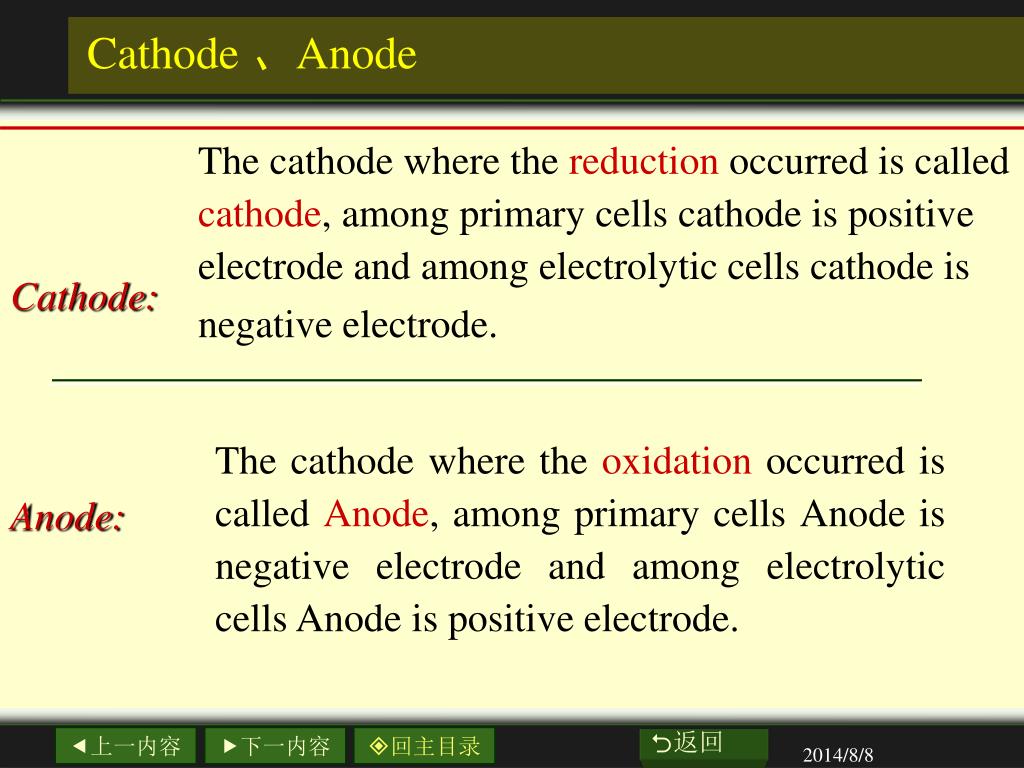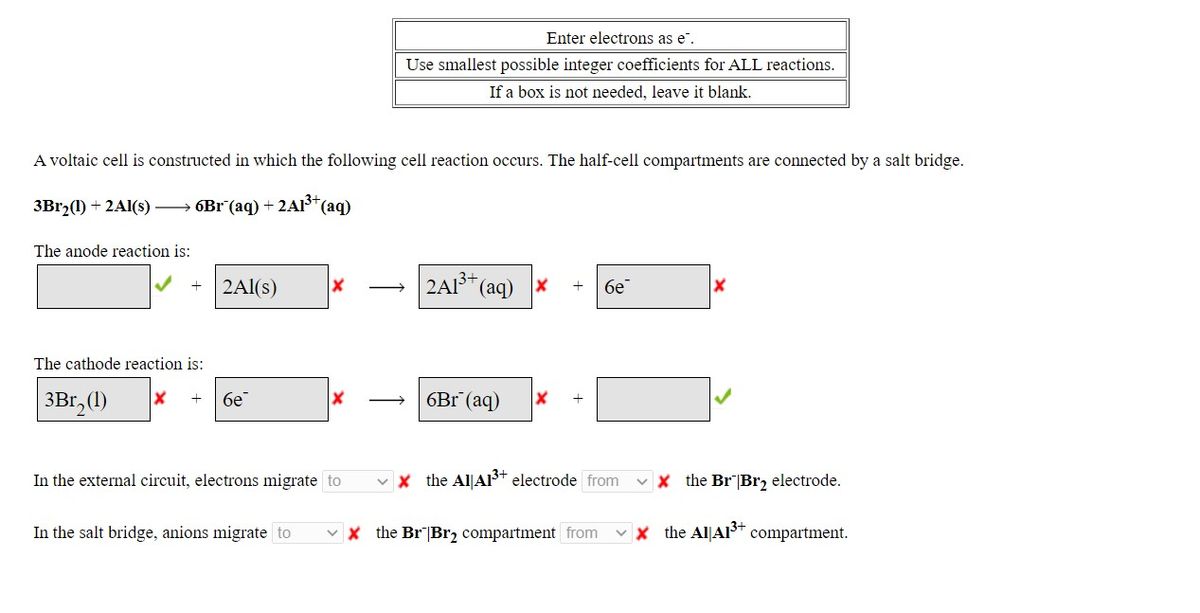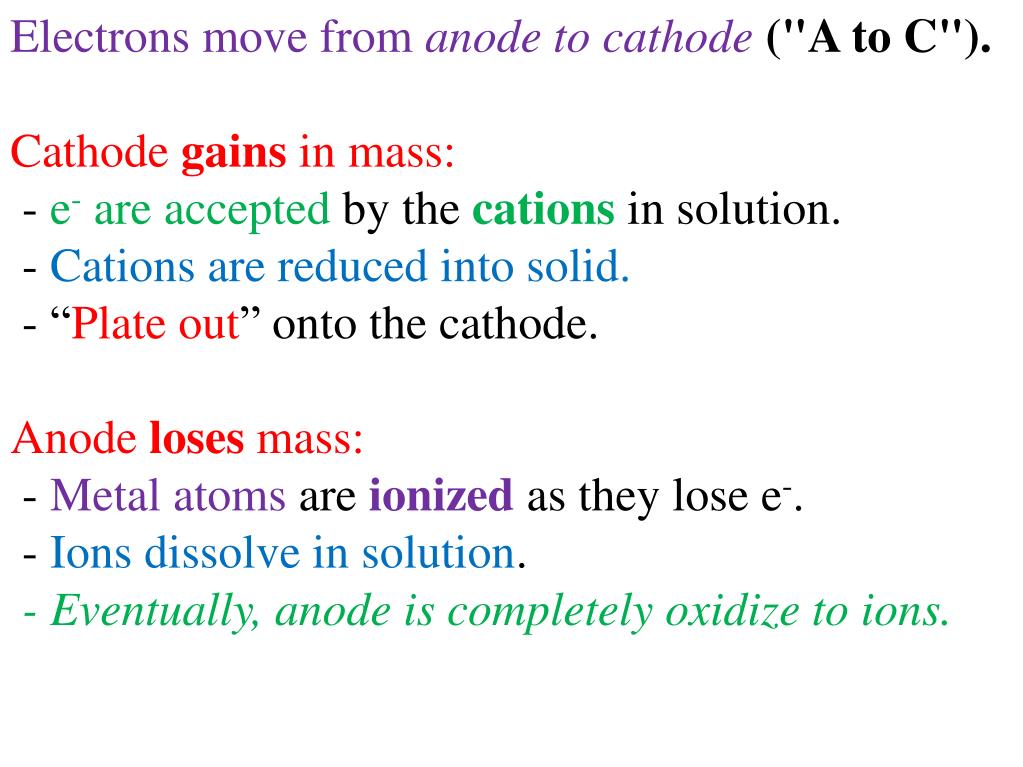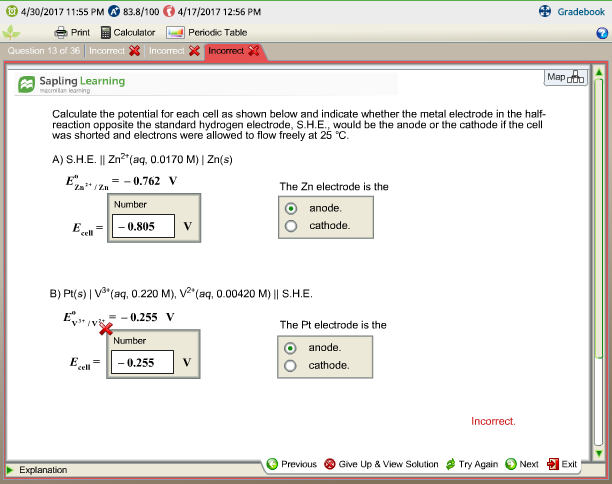

Our reduction half-reaction, we need an oxidation half-reaction. Something is oxidized, and since we already have We know in a redox reaction something is reduced and This is our reduction half-reaction where we have copper 2+ ions gaining two electrons to turn into solid copper. If we're talking about a redox reaction involving copper and zinc, this must be our reduction half-reaction. Substance is to be reduced, so obviously +.34 is The more positive value, the more likely the If we are reducing zinc 2+ to solid zinc, the standard reduction potential turns out to be -.76 volts. If we are reducing copperĢ+ to solid copper, the standard reduction Reduction of copper 2+ ions to the reduction of zinc 2+ ions. The more positive the value is for the standard reduction potential, the more likely the

All of our other half-reactionsĪre compared to this one. Standard hydrogen electrode, which is the reference value. Half-reaction down here, which corresponds to the The standard reduction potential turns out to be +.80 volts. If we look at our first half-reaction, we have silver ion gaining an electron to form a solid silver. All of these half-reactions are written as reduction half-reactions.

Here we have a table of Standard Reduction Potentials, and this is a shortened version, but you can see on the left side, we have different half-reactions. Taking your equation E(cell)= E(cathode)-E(anode) and replacing -E(anode) with E(oxidation you are left with E(cell)= E(cathode)+ E(oxidation). Well, don't be! E(reduction) is the same as E(cathode) and E(oxidation) is the same as -E(anode).Remember that E(anode) is the REDUCTION potential at the anode, thus if we switch it's sign by multiplying it by a negative number we automatically get it's OXIDATION potential or E(oxidation). You may confused as to why in the video the speaker says you can just add the E(reduction) to E(oxidation) and get E(cell). If you have a highly positive reduction potential at the cathode and a highly negative reduction potential at the anode then plugging the terms in to the equation leads to a very spontaneous reaction. This is exactly what the equation in your question is stating. This is good news! In order to have a spontaneous reaction, as is the case in voltaic cells, we want a species that is easily reduced (positive reduction potential) to be able to gain its electrons from a species who is easily oxidized (negative reduction potential). Plugging in a positive value at E(cathode) and a negative value for E(anode) leaves us with an overall positive E(cell), which correlates to a spontaneous reaction. In the formula E(cell)= E(cathode) - E(anode) we have a positive value for the E (cathode) and a negative value for E(anode) since their REDUCTION potentials are positive and negative, respectively. Also, remember that the cathode is the site of reduction so its reduction potential will be positive (likely to spontaneously reduce), and that the anode is the site of oxidation so its REDUCTION potential will be negative (not likely to be reduced).

The higher and more positive the reduction potential the greater likelihood that species would be reduced. Recall from the video that all the potentials in the chart were referring to reduction potential. The formula you have proposed is perfectly valid. Usama, your confusion is perfectly understandable! Let me try to help.


 0 kommentar(er)
0 kommentar(er)
